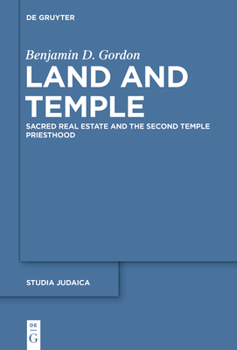Land and Temple: Field Sacralization and the Agrarian Priesthood of Second Temple Judaism
Select Format
Select Condition 
Book Overview
This exploration of the Judean priesthood's role in agricultural cultivation demonstrates that the institutional reach of Second Temple Judaism (516 BCE-70 CE) went far beyond the confines of its houses of worship, while exposing an unfamiliar aspect of sacred place-making in the ancient Jewish experience. Temples of the ancient world regularly held assets in land, often naming a patron deity as landowner and affording the land sanctity protections...
Format:Paperback
Language:English
ISBN:3110776707
ISBN13:9783110776706
Release Date:January 2022
Publisher:de Gruyter
Length:298 Pages
Weight:1.02 lbs.
Dimensions:0.7" x 6.1" x 9.2"
Grade Range:Postsecondary
Customer Reviews
0 rating





